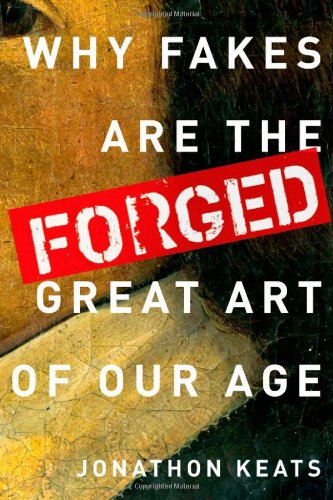Book description:
According to Vasari, the young Michelangelo often borrowed drawings of past masters, which he copied, returning his imitations to the owners and keeping originals. Half a millennium later, Andy Warhol made a game of "forging" the Mona Lisa, questioning the entire concept of originality.
Forged explores art forgery from ancient times to the present. Jonathon Keats profiles individual art forgers and connects their stories to broader themes about the role of forgeries in society. From the Renaissance master Andrea del Sarto who faked a Raphael masterpiece at the request of his Medici patrons, to the Vermeer counterfeiter Han van Meegeren who duped the avaricious Hermann Göring, to the frustrated British artist Eric Hebborn, who began forging to expose the ignorance of experts, art forgers have challenged "legitimate" art in their own time, breaching accepted practices and upsetting the status quo. They have also provocatively confronted many of the present-day cultural anxieties that are major themes in the arts.
Keats looks at what forgeries--and our reactions to them--reveal about changing conceptions of creativity, identity, authorship, integrity, authenticity, success, and how we assign value to works of art. The book concludes by looking at how artists today have appropriated many aspects of forgery through such practices as street-art stenciling and share-and-share-alike licensing, and how these open-source "copyleft" strategies have the potential to make legitimate art meaningful again.
I love books about art forgery, and so was very excited to receive this one to review. Unfortunately, my initial excitement soon wained when it became clear this book didn't really seem to have a central cohesive premise. I definitely enjoyed the in depth look at some renowned forgers (I would have like some illustrations of the art in question but I read a review copy so this may have been addressed in the final for sale version), and I found myself suprisingly sympathetic to the idea that great forgers are still great artists if they are creating new works rather than just churning out multiple copies of the Mona Lisa.
The book is scholarly in tone and certainly presumes some familiarity with the language of art criticism. Though I enjoyed everything I read in the book, at the end I found myself questioning why the book was written because there just didn't seem to be an underlying thesis. Perhaps a longer work would have allowed the author to more fully develop his themes; as it was, I was left feeling unsatisfied as a reader.

No comments:
Post a Comment